How 'Sofrito' can reduce your dementia risk & how to make it
Friday, March 31, 2023
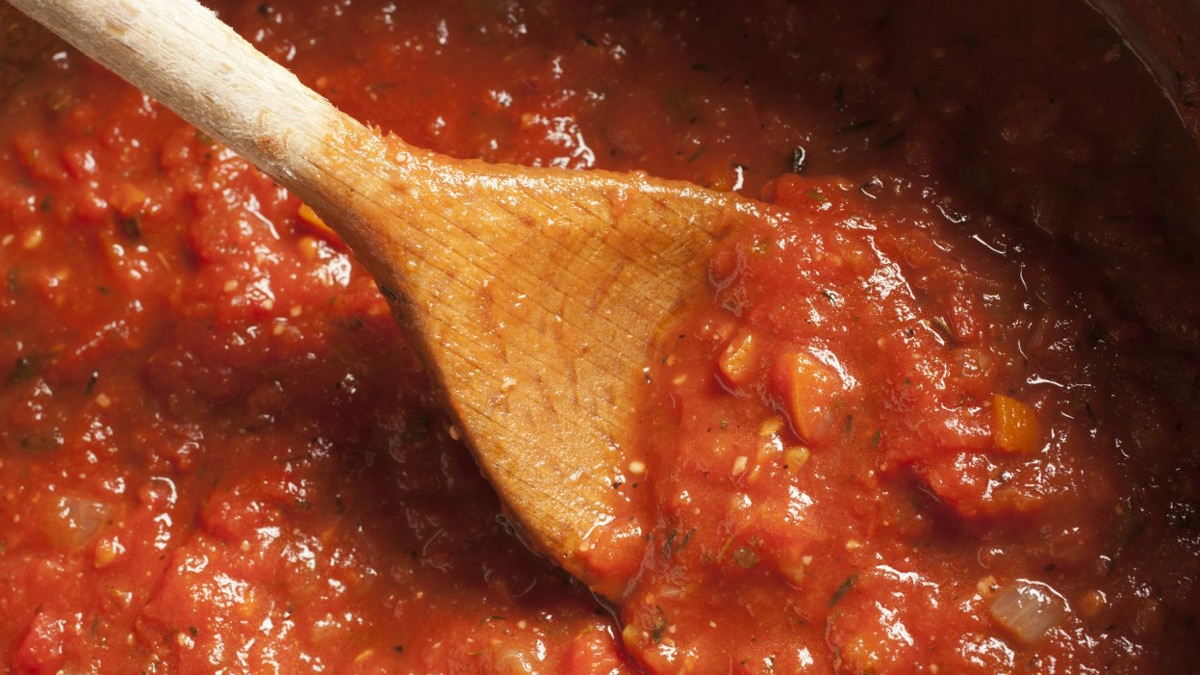
The latest study praising the virtues of the Mediterranean diet has come from Newcastle University. Researchers studied data from 60,000 people and found that eating plenty of fruit, vegetables, legumes, fish and olive oil, and very little red and processed meat could significantly cut your dementia risk.
Along with this, they suggested that to maximise the benefits of the Mediterranean way of life, we should be having twice weekly servings of sofrito – a simple sauce made from just four or five ingredients, that is the bedrock of Mediterranean cuisine, used in sauces, soups and stews, and as a marinade for fish and meat. The ingredients vary slightly by region, but it always starts with a base of staples: onions, tomatoes and olive oil. In Spain, it usually contains garlic and peppers, in Italy, celery and carrots.
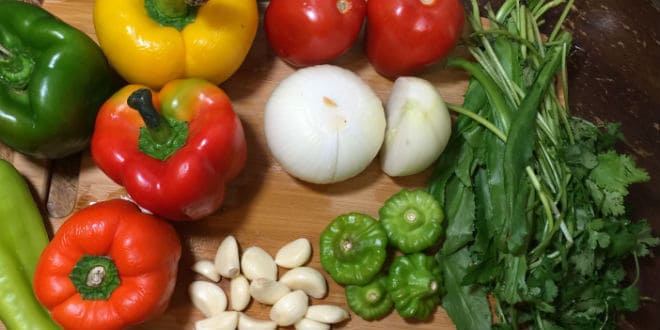
Sofrito was also identified as a key component in the ‘perfect’ diet based on findings from an influential, long-running study conducted in Spain, which informed Newcastle University's research.
One of the crucial ingredients for brain health is plenty of olive oil, which is abundant in sofrito, and has a healthy profile of fats – mono and poly-unsaturated fatty acids. It’s also rich in polyphenols. There is some sound evidence now that these compounds contribute to the cardiovascular and cognitive benefits of the Mediterranean diet.
A diet that includes two dishes cooked with sofrito per week has broader health benefits, as it means that you’re cooking a healthy meal from scratch and not taking shortcuts or eating fast food according to nutritionists. But the tomato base provides a specific brain boost.
Tomatoes contain an antioxidant called lycopene that reduces what we call ‘free radical damage’ – the damage that the environment, our genes and lifestyle can have on our body – and reduces the risk of certain types of dementia. It’s lycopene that gives tomatoes their bright red colouring.
According to nutritionists what’s great about tomatoes is that the lycopene content increases and becomes more readily available to the body when it’s cooked. And you’ve lost the water so you've got a more concentrated source.
Some suggest that cooking tomatoes with olive oil – as is often the case in a Mediterranean diet – further increases the concentration of this potent antioxidant. An Italian study showed that the absorption of lycopene was three times greater from cooked tomatoes in comparison to raw.
Onions and garlic get their smell from allicin, another anti-inflammatory ingredient. Italian 'soffritto' typically also contains carrots and celery. Carrots contain beta-carotene, an antioxidant, and like the tomato, it’s more efficiently absorbed when it’s cooked. Beta-carotene, which is also present in tomatoes, helps support a healthy immune system.
How to make sofrito - Spanish style :
To make a good sofrito, generally, we will use garlic, onion, green pepper, tomatoes and ñoras or chorizo peppers.
To make the sauce, we will start by chopping the vegetables in brunoise and frying them over low heat in a pan with olive oil. If we are going to incorporate dried peppers or ñoras, we will leave them to soak in hot water to extract their flesh and incorporate it into the sauce as we will see later.
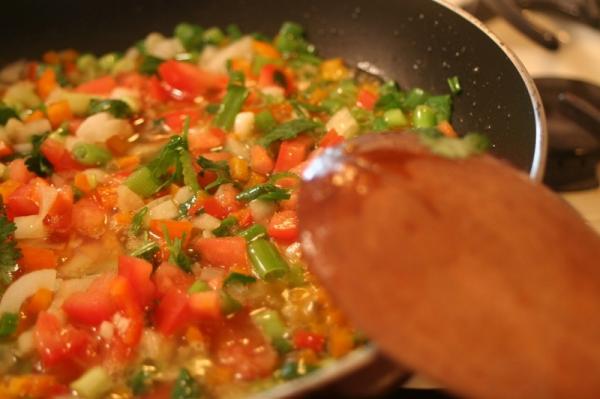
It is a matter of slowly poaching the ingredients, without browning them, since what interests us is the evaporation of the water content to intensify the flavour. In the process, we will be stirring from time to time until the vegetables are at the desired point. The secret to a good stir-fry is patience. Do not do this if you are in a rush.
Depending on the recipe you want to make we can add other ingredients such as aubergines, carrots or courgettes. We can also incorporate spices, and aromatic herbs such as thyme, rosemary, basil or parsley.
However, the essential ingredients of a stir-fry are garlic, onion and tomatoes. From there, your imagination sets the limit.
I recommend that you prepare a sauce with two or three large tomatoes, three cloves of garlic, a couple of large brown onions, a green pepper and two or three ñoras.
The first step is to sauté the onion, add the peppers and when everything is well sauteed, add the chopped tomatoes. It is better to do it this way because tomatoes release a lot of water. While they release it and evaporate it, we take the opportunity to remove the flesh from the ñoras or choriceros (chorizo peppers) that we will have soaked, incorporating the flesh into the sauce.
It is important to remember once again that the sauce must be done over low heat so that the vegetables reduce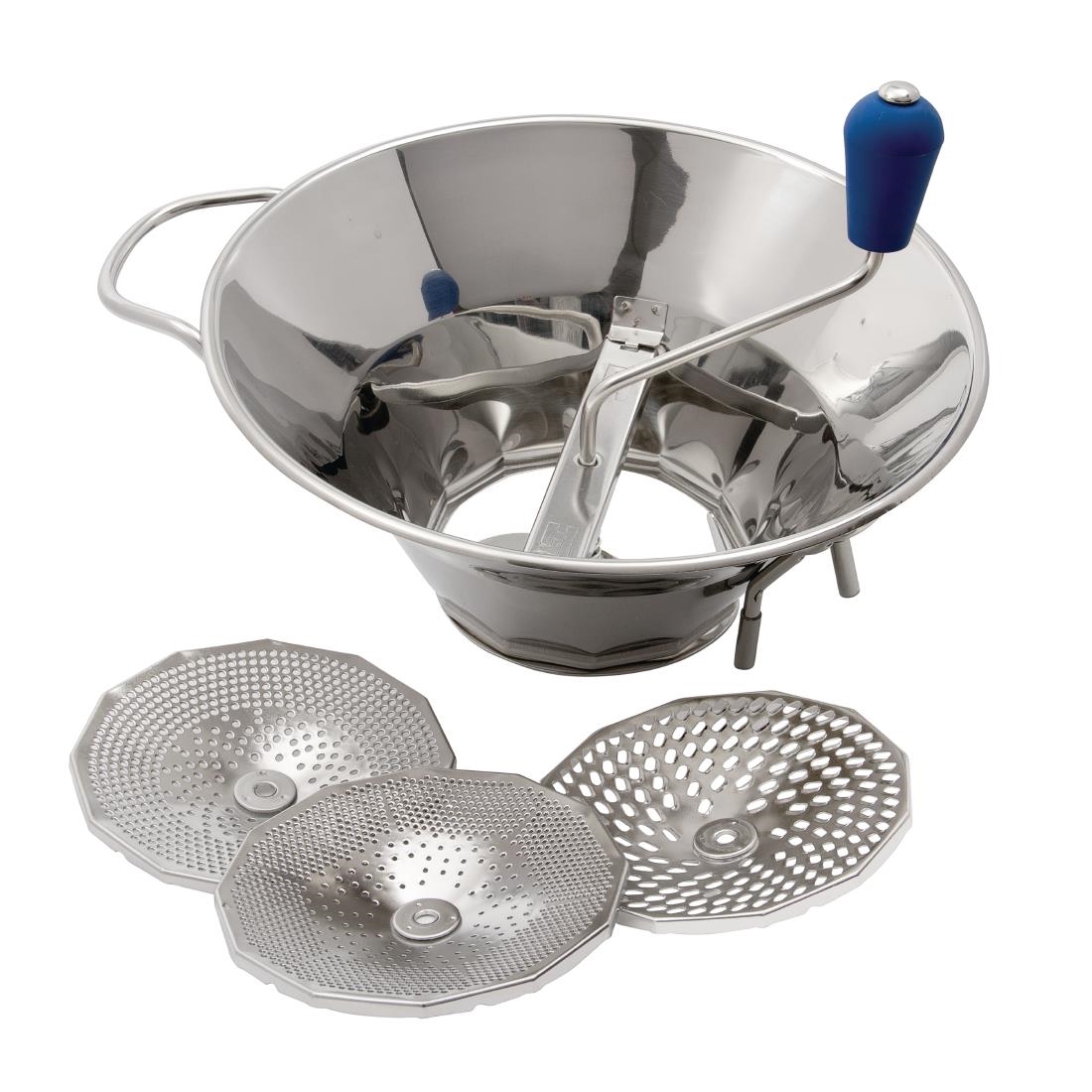 slowly. Once well poached, we can add some aromatic herbs, crushed garlic, parsley and saffron to the sauce, or simply blend it. If you have a moulin grater you can blend it down and remove the seeds and skin at the same time. The resulting texture of the blended sauce will be perfect. If you want it thicker, you can continue reducing it in the pan. Another trick here to intensify the flavour is to add some more water to the blend and reduce it again. You can do this a couple of times and it will intensify the sauce even further. slowly. Once well poached, we can add some aromatic herbs, crushed garlic, parsley and saffron to the sauce, or simply blend it. If you have a moulin grater you can blend it down and remove the seeds and skin at the same time. The resulting texture of the blended sauce will be perfect. If you want it thicker, you can continue reducing it in the pan. Another trick here to intensify the flavour is to add some more water to the blend and reduce it again. You can do this a couple of times and it will intensify the sauce even further.
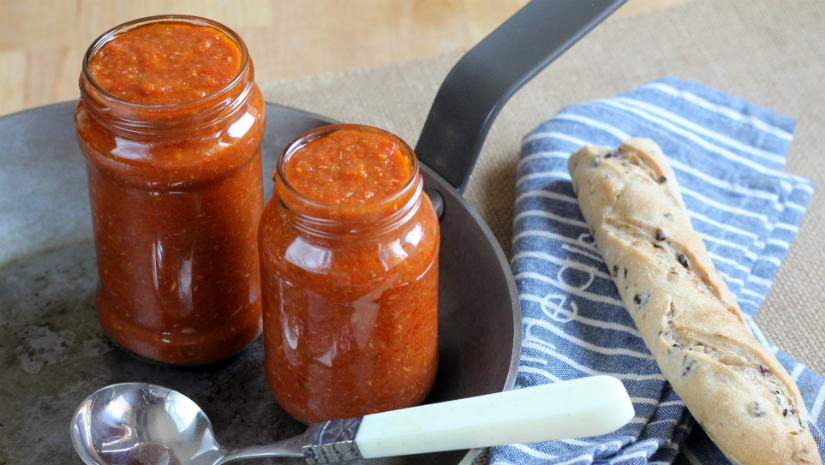
Finally, all that remains is to store our homemade sauce in small sterilized jars like when we make jams, to have it available for when we want to make anything with extra flavour. These jars can be frozen or sealed under a vacuum and can last several months in perfect conditions.
 0
Like
Published at 5:52 PM Comments (0)
0
Like
Published at 5:52 PM Comments (0)
Spanish Schnitzel - Cachopo
Wednesday, March 22, 2023
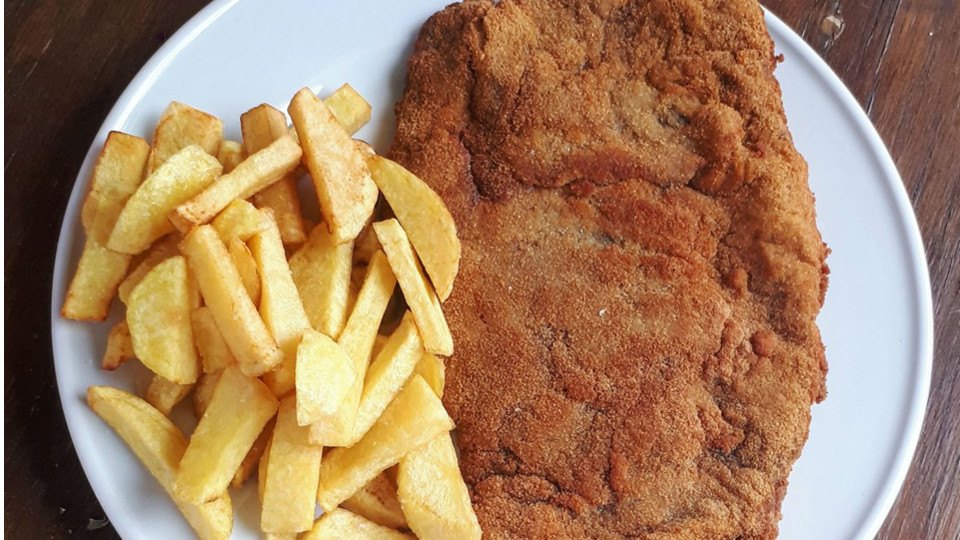 Veal "Cachopo" is an Asturian recipe that consists of a breaded fillet of veal which is stuffed with cured serrano ham or cured beef "cecina", and cheese which is normally a variety typical of this autonomous community, such as cabrales, but you can use any cheese you prefer. It would effectively be the same as a typical Schnitzel but stuffed. If you go on vacation to Gijón or Oviedo, you mustn't leave without trying it! But until then, you can prepare it at home ... What you will need is a couple of very thin veal fillets and, if possible, try and get large long ones. If you go to your local butcher they will normally be able to cut you the perfect fillets. Veal is what is normally used, either rump or silverside cuts, but if you prefer a 'beefier' fillet feel free to get aged meat, just make sure they are thin cuts. Veal "Cachopo" is an Asturian recipe that consists of a breaded fillet of veal which is stuffed with cured serrano ham or cured beef "cecina", and cheese which is normally a variety typical of this autonomous community, such as cabrales, but you can use any cheese you prefer. It would effectively be the same as a typical Schnitzel but stuffed. If you go on vacation to Gijón or Oviedo, you mustn't leave without trying it! But until then, you can prepare it at home ... What you will need is a couple of very thin veal fillets and, if possible, try and get large long ones. If you go to your local butcher they will normally be able to cut you the perfect fillets. Veal is what is normally used, either rump or silverside cuts, but if you prefer a 'beefier' fillet feel free to get aged meat, just make sure they are thin cuts.
The full ingredients to make Asturian Cachopo are as follows:
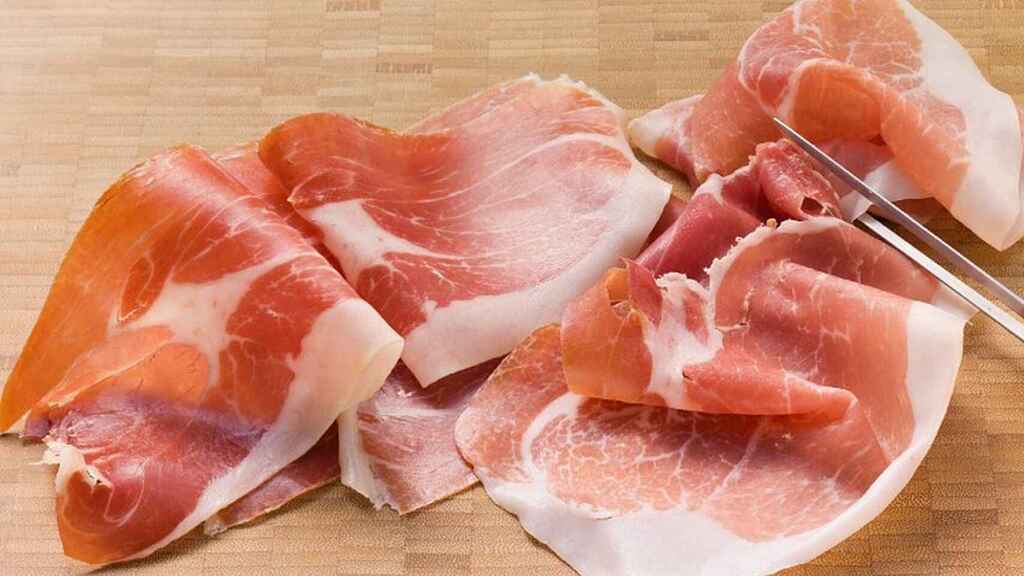 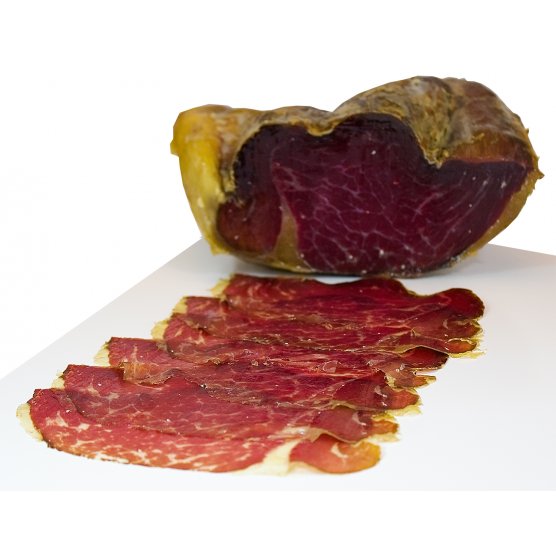
Serrano Ham Cecina
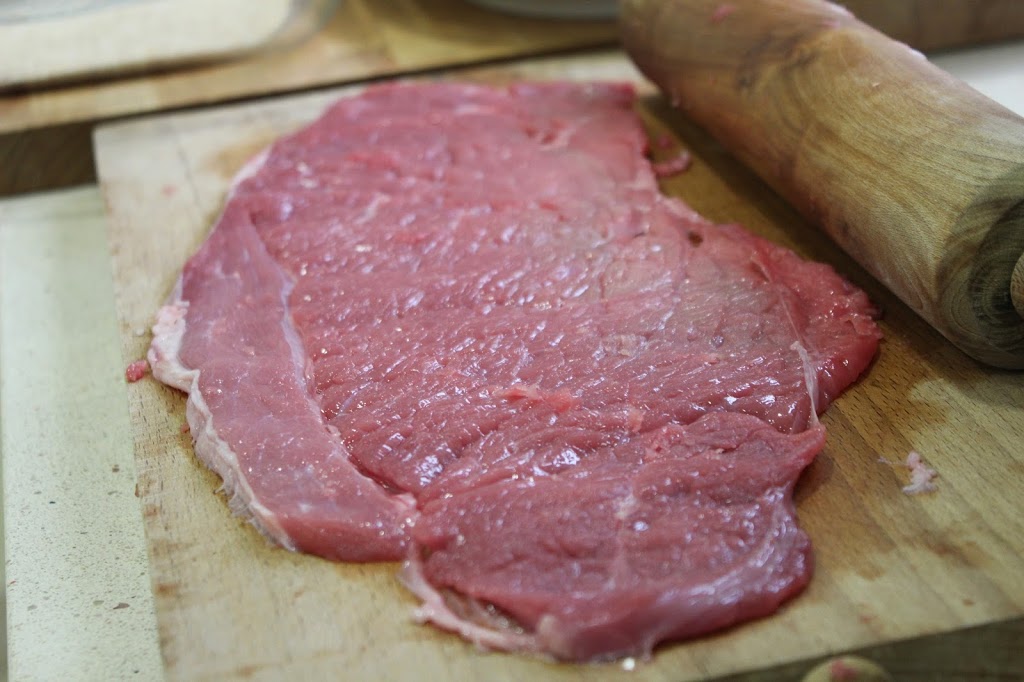
2 very large thin beef steaks - normally rump steak or silverside cuts - in Spain, 'Cadera'. (If you have a meat hammer or a rolling pin, tenderize the meat and thin it out if it is too thick)
Some slices of Serrano ham or cured beef Cecina.
Cheese slices - whichever variety you prefer
Flour, egg and breadcrumbs
Salt and freshly ground black pepper
Extra Virgin Olive Oil
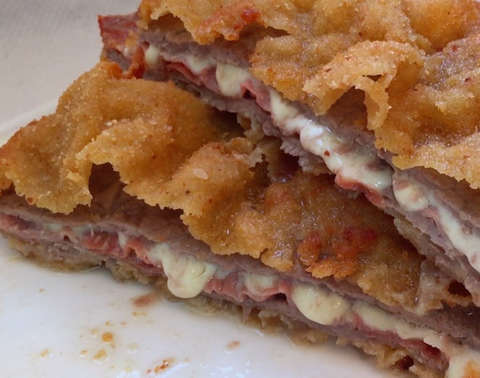
Steps to take:
1.- Season the beef fillets (be careful, don't add too much salt to them than the cheese and the ham or cecina, whichever you decide to use, already have salt and it could become too salty)
2.- Spread out one of the fillets on a cutting board and cover it with the cheese of your choice cut into very thin slices. On top of the cheese add the slices of Serrano ham or Cecina, until it is completely covered. Then place another veal fillet on top. It basically looks like a sandwich with the meat acting as the bread.
3.- Carefully pick up the whole piece and place it on a plate or dish with flour. Turn it over so the meat is covered in flour, then repeat the process with beaten eggs and finally with breadcrumbs. A little trick is to let it rest in the fridge for 1 hour so that all the ingredients cling together well.
4.- Heat up plenty of olive oil to 170-180ºC. Enough to completely cover the Cachopo. After two or three minutes, when it is golden brown, remove it from the oil and place it on some absorbent kitchen paper before serving.
Enjoy!
 2
Like
Published at 9:03 PM Comments (1)
2
Like
Published at 9:03 PM Comments (1)
Introduction to Wine Tasting
Friday, March 17, 2023
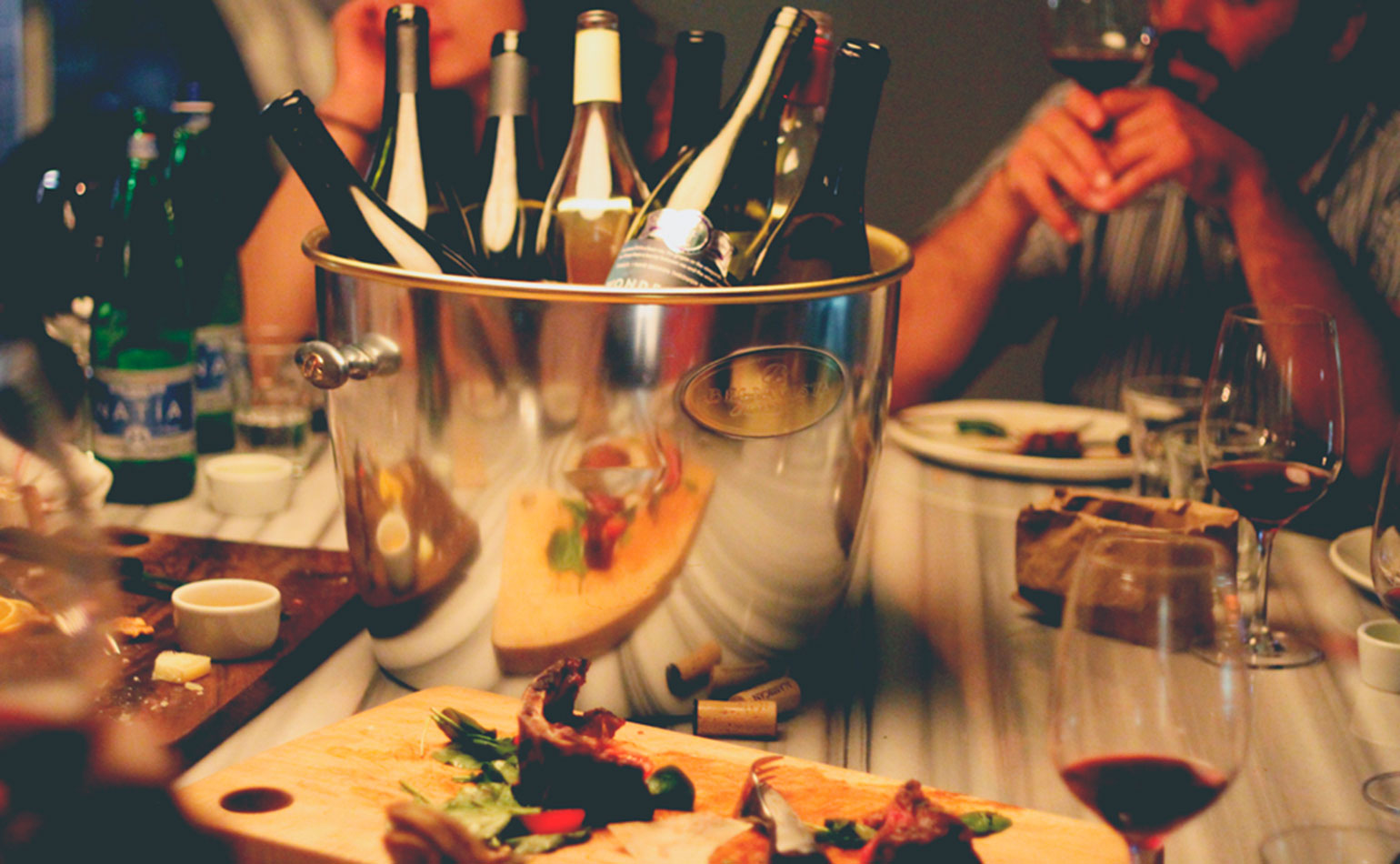
Looking for an excuse to drink more wine? Why not try some wine tasting? To enjoy a perfect wine-tasting session at home, you don't have to be an expert. All you need is a bottle of wine or two, or even three! Make sure it is at its proper temperature, you have a good wine glass and take your time.
Here are a few tips to help with the experience:
1. DO A BLIND TASTING
As much as possible, try to taste the wine without the influence of labels or prices, you will be more open-minded and allow yourself to be carried away only by the sensations. Close your eyes, smell, savour and enjoy.
2. USE A DIFFERENT GLASS FOR EACH WINE
If you are going to taste several wines, change your glass. Prepare a different glass for each wine; this way you will not mix flavours. You also need to cleanse your palette. If you don’t cleanse your palette you will have remnants of the previous wine when you go to taste the next wine. That taints the flavour and you won’t be able to accurately taste the notes and flavours in the wine. When you taste a wide variety of wine your palette can become fatigued and overwhelmed, especially if you are new to drinking wine. Cleanse your palette correctly and you will discover tastes and flavours that you never imagined. High-quality white bread is the very best food for cleansing the palette when wine tasting. Plain white bread or French bread are both ideal. Don’t put anything on it, including butter or oil. Plain crackers are acceptable as well. The reason that bread works so well is that it has an extremely neutral flavour. Professionals in the field always use plain bread and wash it down with water to cleanse their palettes.
3. LOOK BEFORE YOU TRY IT
Before tasting it, observe the colours of the wine, it will help you understand a lot about the grape. For example with white wines from the D.O. Rueda, you will discover dozens of shades: pale, straw yellow, gold ... The greenish-yellow colour, for example, makes the Verdejo grape variety unmistakable. On the other hand, using a white surface (a simple sheet of paper is sufficient) helps to better appreciate the colours of any wine and allows you to see if it is shiny or if there is any sediment - particles in suspension. This doesn't mean the wine is bad, I may add, it is a completely natural occurrence.
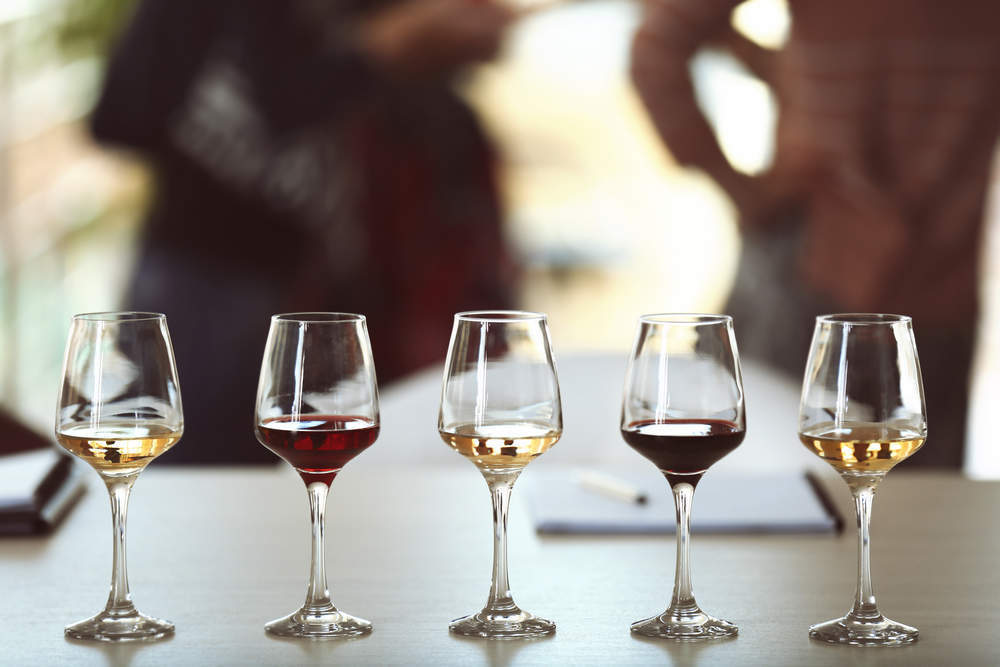
4. HOLD THE GLASS BY THE STEM
The reason is very simple: doing so will avoid heating the wine with your hands. Gently rotate the cup from the base in small circles and in both directions. With this slight movement, you will be able to observe, on the one hand, how the 'tears' of the wine fall (at a lower rate of fall, higher density and, therefore, more alcoholic strength) and, on the other, how the aromas come out when oxygenating the wine.
5. SMELL IT SEVERAL TIMES
Although at first glance it may be somewhat strange to smell the wine before tasting it, it is the key to appreciating it to the fullest, since smell has a sensory capacity superior to any other sense, including taste. When you first start smelling wine, think big to small. Are there fruits? Think of broad categories first, i.e. citrus, orchard, or tropical fruits in whites or, when tasting reds, red fruits, blue fruits, or black fruits. Getting too specific or looking for one particular note can lead to frustration. Broadly, you can divide the nose of a wine into three primary categories:
Primary Aromas are grape-derivative and include fruits, herbs, and floral notes.
Secondary Aromas come from winemaking practices. The most common aromas are yeast-derivative and are most easy to spot in white wines: cheese rind, nut husk (almond, peanut), or stale beer.
Tertiary Aromas come from ageing, usually in the bottle, or possibly in oak. These aromas are mostly savoury: roasted nuts, baking spices, vanilla, autumn leaves, old tobacco, cured leather, cedar, and even coconut.
You should smell the wine in a still glass and also straight after swirling the glass in circles since in both cases different smells and sensations emerge: floral, spiced, fruit, vegetables, balsamic, and chemicals ... My advice is not to wear strong perfumes and avoid external odours so that your capacity to smell is not influenced or weakened.
6. AND NOW, TASTE IT...
The time has finally come to enjoy it! In this phase, we find many characteristics that will make our wine a unique wine: the temperature, the texture, the persistence in the mouth once we have drunk it, and the balance between sweetness and acidity ... Always remember that a wine is not good or bad per se; the best wine will always be the one you like best, so this is what you will need to recognise. What is it that you like about a particular wine?
Taste is how we use our tongues to observe the wine, but also, once you swallow the wine, the aromas may change because you’re receiving them retro-nasally. A few things you want to keep in mind are the following:
Taste: Our tongues can detect salty, sour, sweet, or bitter. All wines are going to have some sour because grapes all inherently have some acid. This varies with climate and grape type. Some varieties are known for their bitterness (i.e. Pinot Grigio), and it manifests as a sort of light, pleasant tonic-water-type flavour. Some white table wines have a small portion of their grape sugars retained, and this adds natural sweetness. You can’t ever smell sweetness though since only your tongue can detect it. Lastly, very few wines have a salty quality, but in some rare instances, salty reds and whites exist.
Texture: Your tongue can “touch” the wine and perceive its texture. Texture in wine is related to a few factors, but an increase in texture almost always happens in a higher-alcohol, riper wine. Ethanol gives a wine texture because we perceive it as “richer” than water. We also can detect the presence of tannins with our tongue, which is that sand-paper or tongue-depressor drying sensation found in red wines.
Length: The taste of wine is also time-based, there is a beginning, middle (mid-palate) and end (finish). Ask yourself, how long it takes until the wine isn’t with you anymore?
Think: Did the wine taste balanced or out of balance (i.e. too acidic, too alcoholic, too tannic)? Did you like the wine? Was this wine unique or unmemorable? Were there any characteristics that shined through and impressed you?
Why not give it a go?
 1
Like
Published at 6:32 PM Comments (1)
1
Like
Published at 6:32 PM Comments (1)
Spanish Chicken in Saffron and Almonds Sauce
Thursday, March 9, 2023
Discover this succulent chicken Pepitoria recipe, cooked in a flavoursome almond, egg yolk and a delicious saffron sauce. A recipe that has survived hundreds of years and is still enjoyed today.
The Pepitoria is a poultry-based recipe that has been a popular part of Spanish gastronomy several centuries now. Some claim that its origin is French-based on some French recipe books referring to the ‘petit-oie’, which means ‘little-goose’, a bird that was traditionally cooked by the French in almost an identical manner to the way the Pepitoria recipe is prepared nowadays. Others though are convinced that it was the Moors who introduced the recipe to the Spanish Peninsula, which would also make sense if we look closely at the ingredients and the way they are cooked, typical of many traditional Moorish recipes.
Whichever is right, it can not be denied that the Pepitoria recipe has been around the Spanish peninsula long enough to be considered a traditional Spanish recipe in its very own right.
Back in the time, chicken wouldn’t be as broadly available to the masses as it is today. And when it was, it would be affordable to the more affluent classes only. This means that originally the Pepitoria would have been prepared with cheaper and more easily available cuts of meat, such as poultry offals or hen. The Pepitoria method of cooking meat is not restricted to hen or chicken. It is also delicious with rabbit, partridge or turkey to mention just a few. Here are the ingredients for 4 servings:
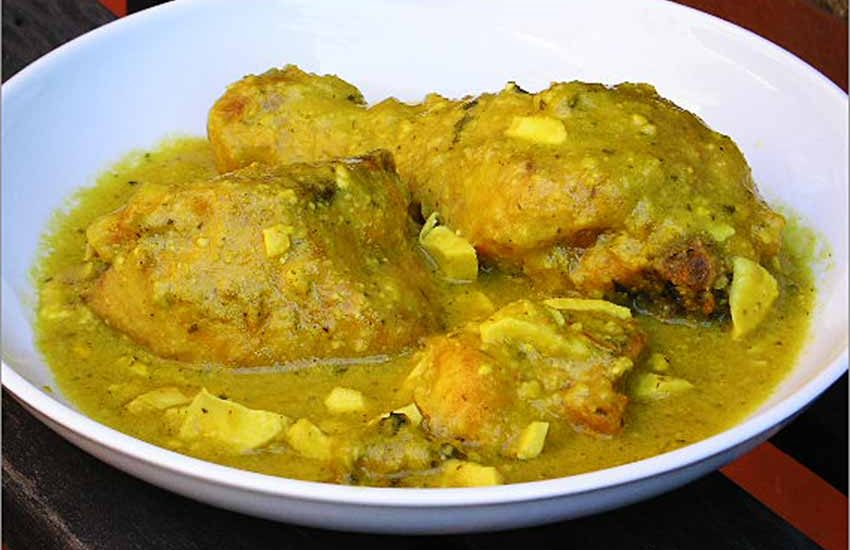
Ingredients:
1.6 kg Chicken – approx. 1 whole chicken, cut into pieces
2 Brown onion – finely chopped
1 Carrot – finely chopped
2 Egg – boiled
2 cloves Garlic – peel and crushed
2 slices Bread – toasted
1 pinch Saffron – toasted
15 Almonds – toasted
250 ml White wine
250 ml Chicken stock
100 ml Extra virgin olive oil
1 Bay leaf
Salt to taste
Freshly ground black pepper - to taste
1 sprinkle of freshly chopped parsley
So, here are the steps you need to take...
1.Cut your chicken into medium-sized pieces. Remove the skin –except for the wings– to avoid excess fat when cooking the chicken. Season and put to one side
2. Brown the chicken in a very hot heavy-bottomed saucepan with a little olive oil until golden-brown all over. Remove from the heat and put to one side.
3. Chop the onions and the carrot. Crush and peel the garlic cloves. Place in the same pan we used for the chicken and cook for 10-15 minutes until soft and transparent, deglazing the pan as you do so.
4. In the meantime, boil the eggs and put the egg yolks to one side. Toast the almonds slightly using a small pan, then the saffron and finally the bread.
With the help of a pestle and mortar, make a paste using the egg yolks, the almonds, the bread and the saffron. This is called typically called a ‘majado’ in Spain
5. Mix in the chicken and the ‘majado’ in the pan with the vegetables. Add the glass of white wine (dry) and cook until the alcohol has evaporated, 3-4 minutes. Then add the chicken stock, the bay leaf and cook on medium heat for approx. 35-40 minutes or until the chicken is soft and tender.
6. Serve immediately, topped with a mixture of chopped egg white and fresh parsley.
You can pair it with french fries or with some plain steamed rice or just get dunking with a good slice of crunchy bread!
Enjoy!
 2
Like
Published at 9:33 PM Comments (0)
2
Like
Published at 9:33 PM Comments (0)
Spam post or Abuse? Please let us know
|
|